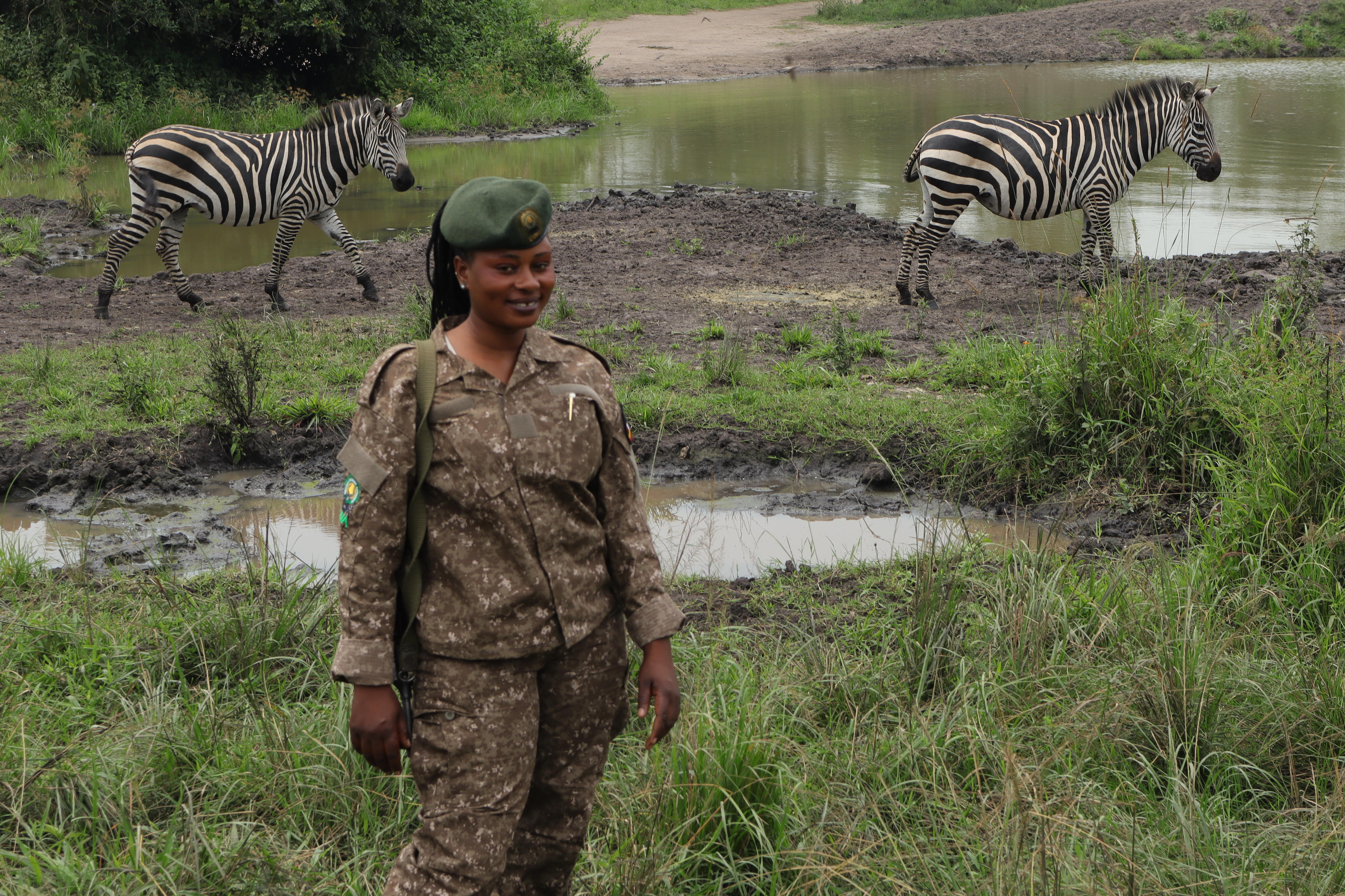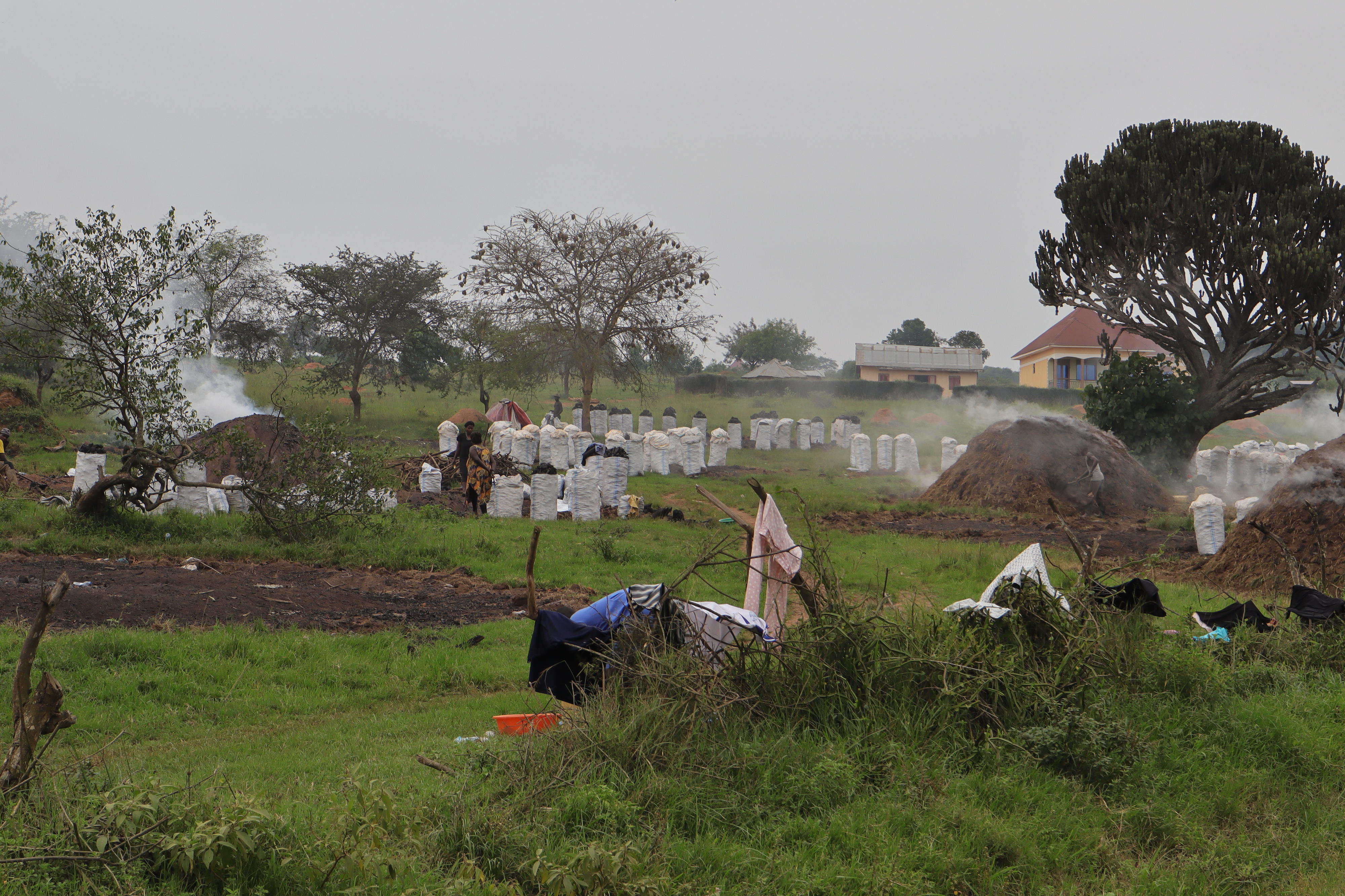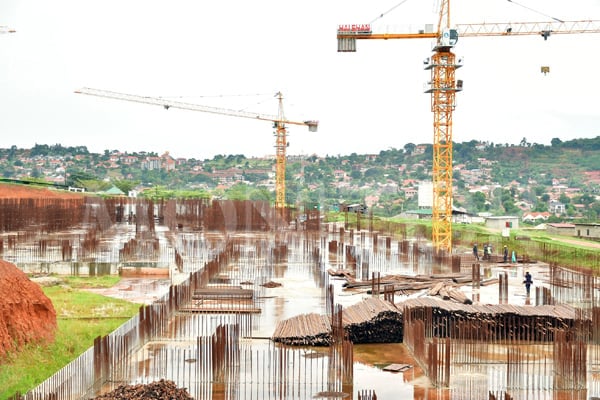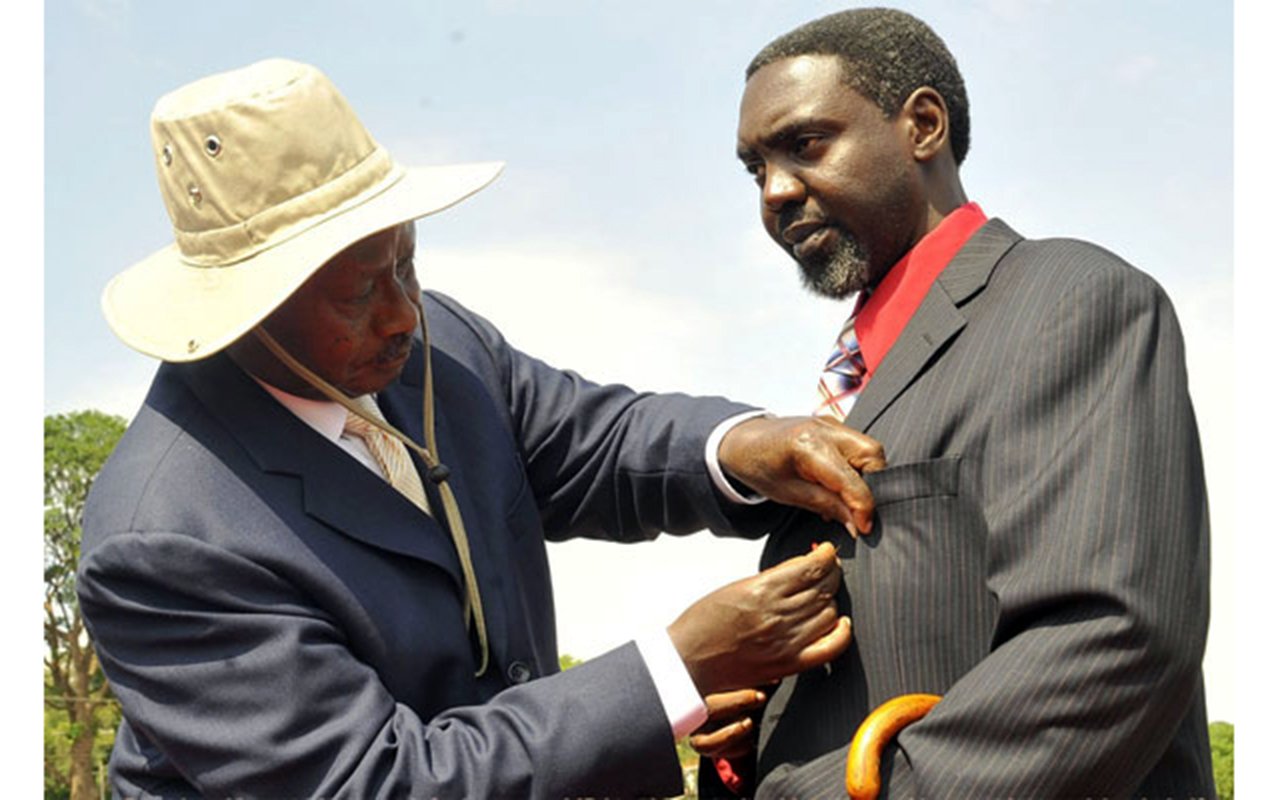Charcoal burning in Lake Mburo National Park explained

One of the rangers at Lake Mburo National Park where the acacia trees are used to make charcoal. Photo/Tony Mushoborozi
What you need to know:
- The giraffes are able to feed on acacia in open areas that they can easily access. Even within the areas that we try to open, we do selective thinning whereby we do not remove all the acacia but rather, a fraction, so there is food for species such as giraffes.» says Hilary Agaba the research warden at Lake Mburo National Park.
If you have been to Lake Mburo National Park lately, you may have noticed the shocking scene of extensive charcoal burning in sections of the park. From the face of it, it appears as though this charcoal burning is likely ridding birds of their habitat and larger animals their food.
When juxtaposed with the fact that government banned charcoal burning in some regions of the country to save the environment, one wonders why the same doesn’t apply to a national park of all places. Is it not the case that the effects of deforestation not only result in environmental degradation but also to the collapse of eco systems in the park resulting in death of the tourism industry? You start wondering what kind of connected individual is allowed to set up such an enterprise in the most unlikely of places.
But hold your horses. Things are not as they seem. The charcoal burning in Mburo is for noble reasons. It is part of the efforts to rid the park of evasive plant species, with acacia being the most formidable.
While acacia species are indigenous to Lake Mburo National Park, it didn’t start rapidly multiplying and colonising the area until the 2000s. Slowly, more and more sections got covered in acacia and the park started changing from an open savannah to a very closed woodland, full of thickets. This was a problem, according to Hilary Agaba, the research warden at Lake Mburo.
“The animals indigenous to Lake Mburo were accustomed to an open savanna grassland, not a wooded area. The park was fast becoming generally unsuitable to herbivorous wild animal species because the animals could not and still cannot easily penetrate through the thickets to access their key requirements such as food and water. This causes them to abandon such areas for more open sections” Agaba says.
The increase in acacia within the park, especially the type called acacia hockii, was initially noticed late 2000’s. By 2012 it was officially acknowledged that acacia had become a dangerous invasive species in the park. Cases of wild animals fleeing the park to go grazing in surrounding cattle ranches become more common as acacia ate up more and more of the open savanna. Something needed to be done fast.

As soon as it was acknowledged that acacia hockii was becoming a problem, a number of options were discussed, according to Agaba. Uganda Wildlife Authority (UWA) considered using specialised mechanical equipment and manual tools to uproot the trees. They also considered applying biological means by introducing animals that love feeding on acacia to reduce its abundance in the park. That is how giraffes were introduced.
In 2015, UWA translocated 15 giraffes from Murchison Falls National Park. Today, less than 10 years later, they have increased to 70. They breed very fast. They have a gestation period of 18 months, but will mate again nine months after giving birth. They also have no predators in Mburo as there are no lions in this park. Their fast-growing numbers has helped keep that acacia spread in check, especially since one giraffe can eat at least 34 kilos of foliage a day. But they are far outnumbered. It is estimated that acacia has so far covered 30percent of park, which amounts to 78 square km out of the total surface area of 260 square km. Giraffes can only eat so much. Which is where the communities come in.
UWA allows communities access to the park to take out the designated invasive plants. They are not paid for the service, nor are they made to pay for the trees. It is a perfect symbiotic relationship. They are given permission to clear the trees for firewood which they either use domestically or sell to the public, to schools, hotels and so on. Many others prefer to convert the wood into charcoal for sale in urban centres. This way, the communities are able to salvage some value from the undesired plants while the park gets to preserve the park’s ecosystem.
“In the process we are not only eradicating the invasive species from the park, but also eradicating poverty from the neighbouring communities, boosting our park-community relations and hence promoting wildlife conservation,” Agaba says.
How it works
The process briefly begins with an application from a community group. Once the group shows interest, the park identifies priority areas within the park that need to be cleared.
“We carry out vetting of individual applicants together with local leaders to ensure there are not potential wrongdoers, for example poachers. Once this is done, each member is allocated a plot measuring an acre to clear. The exercise is supervised and monitored by the park management before one is allowed to take the wood out of the park or before being allocated another block. Some of the things we monitor is to ensure that none of the non-invasive species or the larger trees are removed. If one is found to have broken any rules, we discontinue them,” he says.
When I visited Lake Mburo NP in January, the section around the main gate was being cleared. There were several mounds of burning charcoal covered in earth, littered allover a field measuring about an acre. Men were busy packing charcoal in bags and lining them along the road waiting for traders. This seemed like a solid source of income, capable of inspiring more members of the community to come and join in the craft. If any remedy is going to help the park keep acacia at a minimum, this might be it.

A ranger chats with a tour guide. Photo/Tony Mushoborozi
“So far we have managed to work on approximately 25 sq km. If it was not for Covid-19 and the lockdown, which severely affected the tourism sector, we would probably would have covered more area,” Agaba says.
He adds, “While prohibiting charcoal burning in some regions was to deter uncontrolled cutting of trees leading to environment degradation, in the case of Lake Mburo, the removal of invasive species under our strict guidance is undoubtedly beneficial to conservation.”
[''''''''''''''''''''''''''''
Asked if the changing vegetation of the park over the last two decades has caused new species to appear, Agaba says there annual assessments prove that no new bird species have arrived and therefore clearing the invasive trees won’t affect the eco system.
“We try to keep it the way it was before acacia invaded,” Agaba says.
The acacia vs giraffes irony
Remember that Mburo is now home to 70 giraffes. In 2015, UWA translocated 15 giraffes from Murchison Fall National Park, as part of curtailing the spread of acacia. Girffes love acacia. From afar, it appears that fighting acacia from Mburo would adversely affect the giraffe population there.
Will Mburo do away with the giraffes in order to achieve their goal of eliminating acacia? No. UWA has no plans of completely eliminating all acacia. Agaba says the target is majorly the areas which are inaccessible to wildlife because of the habitat closing up.
“The giraffes are able to feed on acacia in open areas that they can easily access. Even within the areas that we try to open, we do selective thinning whereby we do not remove all the acacia but rather, a fraction, so there is food for species such as giraffes. It is important to note while we have many acacia types in the park, our major concern is acacia hockii that has a high rate of regeneration,” Agaba says.

Conclusion
What if the invasive trees were not eliminated? Agaba says if the invasive species were not managed, they would overtake the park. A large population of wildlife would be left with nowhere to feed, they would move outside the park onto people’s farms and likely cause human-wildlife conflicts. This would lead to a decline in wildlife populations.
QUICK FACTS
• Animals at Lake Mburo, especially the larger animals such as giraffes, buffalo and hippos are generally peaceful because there is barely any formidable predators. The only threat to most indigenous animals is acacia. The more it speads across the park, the more animals invade farms in the neighbouring communities which has potential to result in conflict between animals and humans. Avoidance of that conflict is the biggest reason for fighting acacia through charcoal burning.
• People using charcoal account for roughly 23percent of the country’s total population, which means that some 10.7 million citizens in a nation of 46.8 million rely on charcoal to cook their meals, based on recent UN data.




